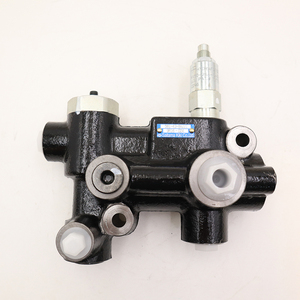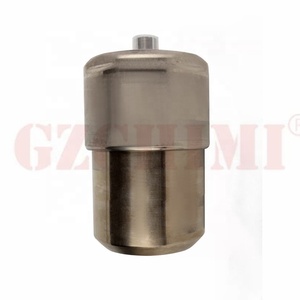Types of Brake Accumulators
A brake accumulator is a critical component of the braking system used to store pressurized brake fluid or air. This stored energy maintains braking force, enhances system reliability, and improves overall efficiency. Understanding the different types available helps in selecting the right option for your specific vehicle needs.
Diaphragm Brake Accumulator
Features a rubber diaphragm dividing the internal space into two compartments - one for brake fluid and one for compressed air. When brakes are applied, the diaphragm shifts to compress the air, creating pressure that supports braking force.
Best for: Smaller brake systems requiring moderate pressure and volume
Bladder Brake Accumulator
Contains a bladder bag filled with hydraulic fluid situated in a pre-charged nitrogen gas chamber. During braking, the bladder expands, compressing the nitrogen and generating pressure that enhances braking force.
Best for: High-performance and large braking systems needing quick response and high pressure
Piston Brake Accumulator
Consists of a piston dividing two chambers - one with pre-compressed gas and another with brake fluid. When brakes are applied, the piston movement reduces fluid volume and increases pressure, enhancing braking force.
Best for: Modern advanced braking systems in high-speed trains and aerospace applications
Spring Brake Accumulator
Uses a mechanical spring to store energy. The spring compresses during brake application and releases stored energy to boost braking force when needed.
Best for: Emergency braking systems that must function even when hydraulic systems fail
| Accumulator Type | Operating Principle | Ideal Applications | Advantages |
|---|---|---|---|
| Diaphragm | Rubber diaphragm separates fluid and air | Passenger vehicles, light trucks | Simple design, cost-effective, moderate maintenance |
| Bladder | Elastomeric bladder in nitrogen chamber | Performance vehicles, heavy-duty equipment | High pressure capability, fast response time |
| Piston | Moving piston separates gas and fluid | Trains, aircraft, high-performance applications | Precise control, high pressure capacity, durability |
| Spring | Mechanical spring stores energy | Emergency systems, parking brakes | Works without hydraulic pressure, failsafe operation |
Expert Tip: When choosing between accumulator types, consider not only your current vehicle specifications but also the driving conditions you typically encounter. For vehicles frequently driving in mountainous terrain or carrying heavy loads, a higher capacity accumulator like a bladder or piston type may provide better long-term brake performance.
Specifications & Maintenance of Brake Accumulators
Understanding the key specifications and maintenance requirements of brake accumulators ensures optimal braking performance, safety, and longevity. These components are crucial for vehicles with hydraulic or air brake systems.
Key Specifications
Capacity
Measured in liters or cubic centimeters
Determines energy storage potential
Affects braking frequency without pressure loss
Larger capacity suits heavy vehicles and demanding conditions
Maximum Pressure Rating
Measured in bar or psi
Maximum safe operational pressure
Must exceed peak system pressure
Critical safety specification
Pre-charge Pressure
Initial pressure in gas chamber
Influences response characteristics
Varies by application and system design
Requires periodic checking
Size & Weight
Varies by application requirements
Affects installation parameters
Impacts system dynamics
Must match vehicle specifications
Maintenance Requirements
| Maintenance Task | Frequency | Importance | Procedure Notes |
|---|---|---|---|
| Visual Inspection | Monthly | High | Check for leaks, corrosion, or physical damage; inspect mounting hardware |
| Pressure Testing | Every 6 months | Critical | Verify pre-charge pressure is within specifications using appropriate gauge |
| Gas Recharging | As needed (typically 1-2 years) | High | Use dry nitrogen only; requires special equipment; best performed by professionals |
| Fluid Quality Check | With brake fluid changes | Medium | Ensure fluid meets manufacturer specifications; check for contamination |
| Full Replacement | 5-10 years (system dependent) | Critical | Replace entire accumulator after service life or if performance deteriorates |
Important Safety Note: Never attempt to disassemble a brake accumulator while it is pressurized. These components store considerable energy and can cause serious injury if handled improperly. Always follow manufacturer guidelines and consider professional servicing for maintenance operations beyond visual inspection.
How to Choose Brake Accumulators
Selecting the right brake accumulator for your vehicle requires careful consideration of several critical factors. Making an informed choice ensures safety, performance, and compatibility with your braking system.
| Selection Factor | Importance | Consideration Points |
|---|---|---|
| Vehicle Type | Critical |
|
| Brake System Type | Critical |
|
| Capacity & Size | High |
|
| Pressure Rating | Critical |
|
| Quality & Manufacturer | High |
|
| Installation & Maintenance | Medium |
|
Buyer's Tip: When in doubt about specifications, always consult your vehicle's service manual or contact the manufacturer directly. Using an incorrectly sized accumulator can lead to brake system inefficiency or failure. For specialized vehicles like heavy equipment or performance cars, consider consulting with a braking system specialist before making your selection.
How to DIY and Replace Brake Accumulators
Many brake accumulators feature a straightforward design that makes replacement accessible for those with basic mechanical skills. However, always consult your vehicle's service manual for specific instructions before beginning this safety-critical maintenance task.
Safety Warning: Improper brake accumulator replacement can lead to brake system failure and serious safety hazards. If you're uncertain about any step in this process, consult a professional mechanic. Always wear appropriate safety equipment including eye protection and gloves.
Preparation and Safety Measures
Park on level ground, engage parking brake, and place wheel chocks. Wear safety glasses and gloves to protect against hydraulic fluid. Lift the vehicle using a jack and secure with jack stands. Disconnect the negative battery terminal to prevent electrical hazards.
Gather Tools and Parts
Collect all necessary tools: wrenches, brake fluid container, fresh hydraulic fluid, rags, and the new brake accumulator that matches your vehicle's specifications. Having everything ready prevents contamination from extended system exposure.
Locate and Access the Accumulator
Using your service manual, identify the brake accumulator's location. On most vehicles, it's near the master cylinder or ABS unit. Remove any covers or components blocking access while documenting their positions for reassembly.
Relieve System Pressure
Before removing any components, relieve the hydraulic system pressure by slowly pumping the brake pedal with the engine off until it feels firm. This prevents fluid spray during disconnection.
Drain and Remove Old Accumulator
Place a container beneath the accumulator to catch hydraulic fluid. Carefully disconnect hydraulic lines, noting their orientation. Remove mounting bolts and extract the old accumulator, keeping it upright to minimize fluid spillage.
Install New Accumulator
Position the new accumulator in the mounting location. Secure with mounting bolts to the torque specifications in your service manual. Reconnect hydraulic lines in their original orientation, ensuring proper alignment to prevent cross-threading.
Refill and Bleed the System
Refill the brake system with fresh hydraulic fluid meeting manufacturer specifications. Bleed the brake system completely to remove air from the lines, working from the furthest brake to the closest, usually in this order: right rear, left rear, right front, left front.
Test Before Driving
Reconnect the battery, remove jack stands, and lower the vehicle. Start the engine and let it run for several minutes. Test the brakes by pressing the pedal multiple times, ensuring it feels firm and responsive before driving. Check for leaks around all connections.
DIY Tip: Take photos of the original accumulator installation before removal to reference during reassembly. This documentation helps ensure proper orientation of lines and mounting hardware. Also, consider replacing brake fluid throughout the entire system during accumulator replacement for optimal braking performance.
Frequently Asked Questions
A brake accumulator is a critical component in hydraulic braking systems that stores pressurized fluid or energy. It acts as a reserve power source to ensure consistent brake performance, even if the main pump temporarily stops working. This stored energy helps maintain adequate braking pressure during rapid or repeated brake applications, enhancing safety and reliability.
Brake accumulators provide multiple benefits to vehicle braking systems:
- Enhanced reliability by maintaining brake pressure even during pump failure
- Consistent brake performance during repeated applications (prevents brake fade)
- Reduced wear on the main pump by absorbing pressure fluctuations
- Smoother brake pedal feel with less pulsation
- Emergency braking capability in case of hydraulic system failure
- Extended life of other braking system components
The brake accumulator's location varies by vehicle design and braking system type. Typically, it's positioned near the master cylinder, the ABS control unit, or along the hydraulic lines. In some vehicles, it may be mounted on the firewall in the engine compartment, while others place it near the frame rail or on the brake booster assembly. Consult your vehicle's service manual for the exact location in your specific model.
No, not all vehicles use brake accumulators. They're most commonly found in:
- Vehicles with hydraulic brake systems, especially those with anti-lock braking systems (ABS)
- Larger vehicles like trucks, buses, and commercial equipment that require additional braking power
- Many European and luxury vehicles with advanced braking systems
- Vehicles with regenerative braking systems or hybrid braking designs
Basic mechanical braking systems in some economy vehicles may not incorporate an accumulator. Additionally, many older vehicles produced before the widespread adoption of hydraulic braking systems lack this component.
A brake accumulator is charged automatically through the normal operation of the vehicle's hydraulic system. When the brakes are not in use, the hydraulic pump pressurizes the system, which charges the accumulator by compressing the gas chamber (in diaphragm, bladder, or piston types) or tensioning the spring (in spring types). This process requires no special action from the driver.
For maintenance purposes, the pre-charge pressure in gas-type accumulators may need to be recharged periodically with nitrogen gas using specialized equipment. This maintenance task is typically performed by qualified technicians during routine brake system service.
Common symptoms of a failing brake accumulator include:
- Spongy or soft brake pedal feel
- Gradually sinking brake pedal when held down
- Increased stopping distance or reduced braking power
- Warning lights for ABS or brake system on dashboard
- Unusual noises (hissing or clicking) during brake application
- Brake pedal requires pumping to build pressure
- Visible hydraulic fluid leaks around the accumulator
If you experience these symptoms, have your braking system inspected immediately by a qualified technician.























































